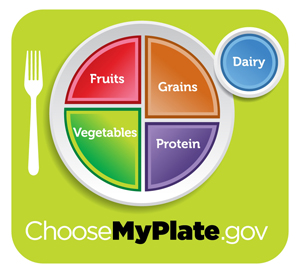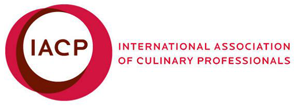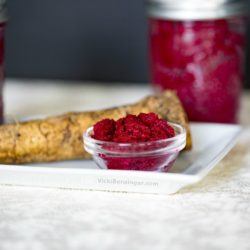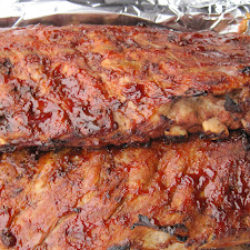The New USDA Food Pyramid is a Plate!
After devoting decades to designing a food pyramid, then refining that design with colored stripes and steps, the nation’s nutrition experts have finally settled on what they believe is the perfect geometry to represent what we should eat: A PLATE.
The 3 main areas of focus when plating up your food are:
1. Balancing Calories
● Enjoy your food, but eat less.
● Avoid oversized portions.
2. Foods to Increase
● Make half your plate fruits and vegetables.
● Make at least half your grains whole grains.
● Switch to fat-free or low-fat (1%) milk.
3. Foods to Reduce
● Compare sodium in foods like soup, bread, and frozen meals ― and choose the foods with lower numbers.
● Drink water instead of sugary drinks.
This new guide was created to remind consumers to eat a healthful diet and limit their intake of heavy foods.
“MyPlate” promotes fruits and vegetables, which cover half the circle. Grains occupy an additional quarter, as do proteins such as meat, fish and poultry. A separate circle represents “dairy” and rests to the side. Desserts appear to have been removed.
What foods are in the Vegetable Group?
Any vegetable or 100% vegetable juice counts as a member of the Vegetable Group. Vegetables may be raw or cooked; fresh, frozen, canned, or dried/dehydrated; and may be whole, cut-up, or mashed.
Vegetables are organized into 5 subgroups, based on their nutrient content. Some commonly eaten vegetables in each subgroup are:
What foods are in the Fruit Group?
Any fruit or 100% fruit juice counts as part of the Fruit Group. Fruits may be fresh, canned, frozen, or dried, and may be whole, cut-up, or pureed. Some commonly eaten fruits are:
What foods are in the Grains Group?
Any food made from wheat, rice, oats, cornmeal, barley or another cereal grain is a grain product. Bread, pasta, oatmeal, breakfast cereals, tortillas, and grits are examples of grain products.
Grains are divided into 2 subgroups, whole grains and refined grains.
Whole grains contain the entire grain kernel ― the bran, germ, and endosperm. Examples include:
•whole-wheat flour
•bulgur (cracked wheat)
•oatmeal
•whole cornmeal
•brown rice
Refined grains have been milled, a process that removes the bran and germ. This is done to give grains a finer texture and improve their shelf life, but it also removes dietary fiber, iron, and many B vitamins. Some examples of refined grain products are:
•white flour
•degermed cornmeal
•white bread
•white rice
Most refined grains are enriched. This means certain B vitamins (thiamin, riboflavin, niacin, folic acid) and iron are added back after processing. Fiber is not added back to enriched grains. Check the ingredient list on refined grain products to make sure that the word “enriched” is included in the grain name. Some food products are made from mixtures of whole grains and refined grains.
What foods are in the Protein Foods Group?
All foods made from meat, poultry, seafood, beans and peas, eggs, processed soy products, nuts, and seeds are considered part of the Protein Foods Group. Beans and peas are also part of the Vegetable Group.
Select a variety of protein foods to improve nutrient intake and health benefits, including at least 8 ounces of cooked seafood per week. Young children need less, depending on their age and calories needs. The advice to consume seafood does not apply to vegetarians. Vegetarian options in the Protein Foods Group include beans and peas, processed soy products, and nuts and seeds. Meat and poultry choices should be lean or low-fat.
Tips:
- Choose lean or low-fat meat and poultry.
- Select some seafood that is rich in omega-3 fatty acids, such as salmon, trout, sardines, anchovies, herring, Pacific oysters, and Atlantic and Pacific mackerel
- Check the Nutrition Facts label to help limit sodium intake.
- Choose unsalted nuts and seeds to keep sodium intake low.
What foods are included in the Dairy Group?
All fluid milk products and many foods made from milk are considered part of this food group. Most Dairy Group choices should be fat-free or low-fat. Foods made from milk that retain their calcium content are part of the group. Foods made from milk that have little to no calcium, such as cream cheese, cream, and butter, are not. Calcium-fortified soymilk (soy beverage) is also part of the Dairy Group.
Nutritionists point out that the plate image does not suggest portion sizes, only the ratios in which foods should be eaten.
I believe we all know how we should eat, it’s just that we choose not to always make the right choices.
How do you feel about the new USDA food chart, “My Plate?”
My thought is that the concept is great but it doesn’t tell you not to smother your vegetables with butter or cheese or to avoid heavy sauces on your protein. Although it’s common sense, a reminder for some I think would be helpful!
Do you follow “My Plate” and if not, what is your downfall? Although I follow it fairly well my downfall is without question is chocolate!



 Hi, I’m Vicki Bensinger! I have been teaching culinary classes throughout Missouri since 1992. I offer personalized private culinary classes for individuals and small groups in the comfort of your home or organization.
Hi, I’m Vicki Bensinger! I have been teaching culinary classes throughout Missouri since 1992. I offer personalized private culinary classes for individuals and small groups in the comfort of your home or organization.




haha, so funny Vicki! But true – I don’t see a spot on that plate for chocolate!
Otherwise, as you said, we know what we SHOULD be doing – it’s a matter of doing it.
Excellent post Vicki! We at Fruits & Veggies–More Matters follow the MyPlate concept. In fact, we are asking people to take our Half-My-Plate challenge (http://www.fruitsandveggiesmorematters.org/?page_id=12135) to encourage them to fill half their plates with fruits and/or veggies. Hopefully, the more people we can get to follow these new guidelines, the less of an issue we will have with childhood obesity.